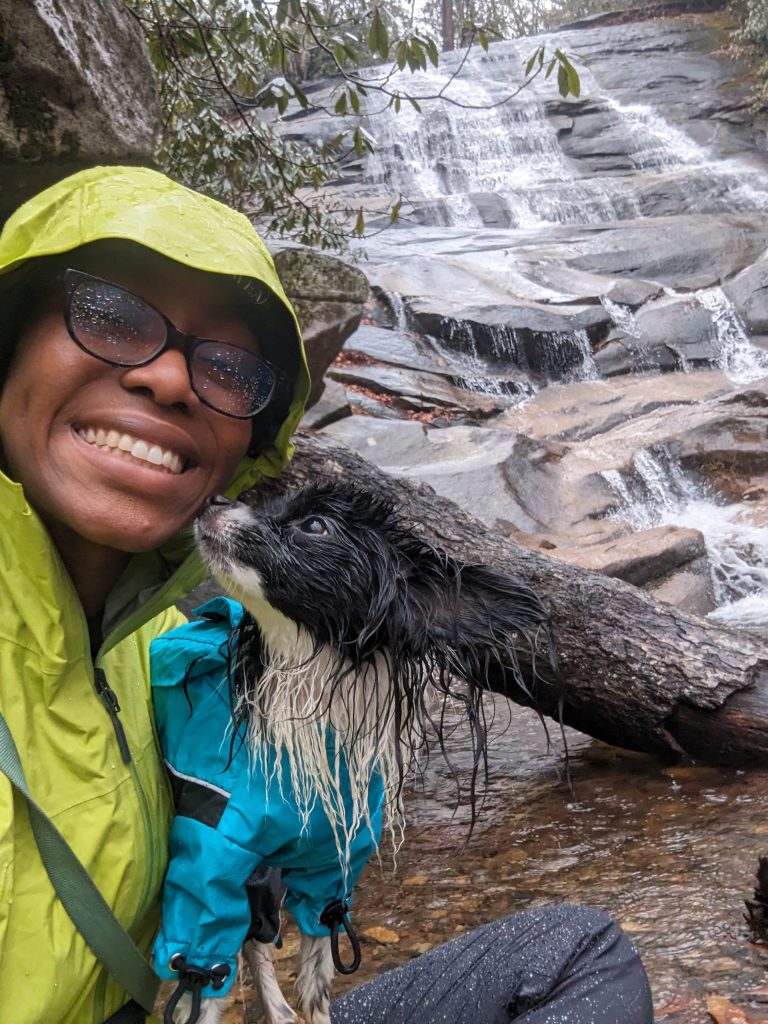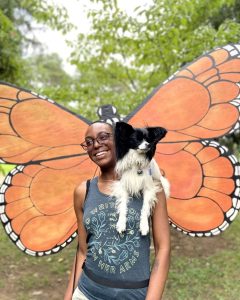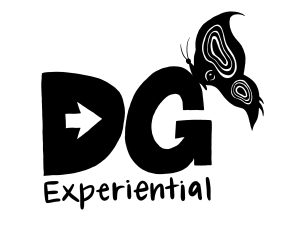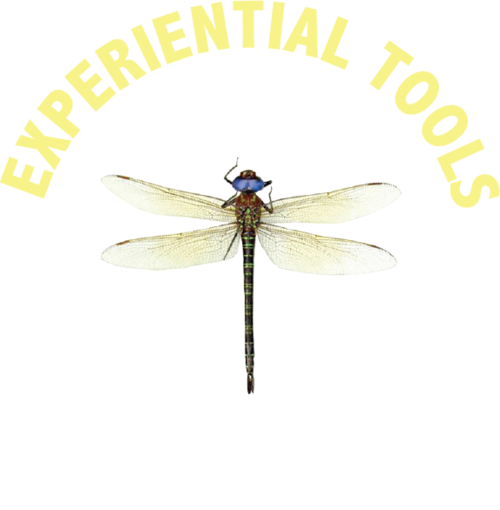Jan 17, 2024 Insights on the Art of Practitioner Self-Reflection from Guest Blogger Deidra Goodwin
 As the calm of winter settled in here in Vermont during the last days of 2023, I enjoyed the quietest weeks of my professional calendar. During those slower-paced days of work life, I spent time “catching up with myself,” organizing my new studio space, and reflecting on my work over the past year, my “why” as an educator, and my goals for the new year. I cherish that annual break in the action for self-reflection. When January 2nd rolled around, and I felt the pace quickening as I headed back on the road to facilitate a series of professional development workshops, I reminded myself how important it is to cultivate this practice all year round. I am still working on how I will keep this reflective momentum in what is already turning out to be a wonderfully full 2024.
As the calm of winter settled in here in Vermont during the last days of 2023, I enjoyed the quietest weeks of my professional calendar. During those slower-paced days of work life, I spent time “catching up with myself,” organizing my new studio space, and reflecting on my work over the past year, my “why” as an educator, and my goals for the new year. I cherish that annual break in the action for self-reflection. When January 2nd rolled around, and I felt the pace quickening as I headed back on the road to facilitate a series of professional development workshops, I reminded myself how important it is to cultivate this practice all year round. I am still working on how I will keep this reflective momentum in what is already turning out to be a wonderfully full 2024.
In past years, I’ve explored the value of educators and facilitators engaging in time for this ongoing practitioner self-reflection and offered some ideas for day-to-day self-reflection in these articles from 2011 and 2021: Embracing the Quiet and Taking Time to Reflect and The Reflective Practitioner: Celebrating the Winter Solstice with Intentional Reflection and Planning.
This year, I wanted to share a different perspective and new ideas on the art of self-reflection. I reached out to my friend and colleague, Deidra Goodwin, who shares my deep commitment to and passion for reflection in experiential education and self-reflection for the practitioner. Deidra offers valuable insights from her recent graduate studies at Western Carolina University’s Experiential Education graduate program, working for Sierra Club full time, teaching at Brevard College, and her organization, DGoodwin Experiential, LLC. Thank you, Deidra, for sharing your thoughts as a guest contributor.
Guest Blogger Deidra Goodwin’s Take on Practitioner Self-Reflection:

Deidra and her companion Fizz on their reflective hike.
Going into a new year always brings about a sense of reflection, or at least it does for me. Something I find myself wondering often in January is why, as a professional who educates folks on the value of reflection, I find myself doing most of my personal thinking about it once a year? Why is it that doing what I encourage other professionals to do is such a struggle? The answer: time to look at the advice I give or have been given by others professionally and put a personal lens on it.
As a facilitator, I’m all about adapting to my group, repurposing other activities for reflection, and finding methods that work with the group instead of forcing them to fit into the activity I had in mind. Life is dynamic; it’s busy, interests change, and energy changes, so personal reflection should also change. Thinking about the most significant “a-ha” moments I’ve had when facilitating reflective experiences for others, several are transferable to building a consistent reflective practice for myself.
Such as:
-Repurpose familiar activities
-Change it up; let the content drive the method
-A little extra intention goes a long way
Let’s elaborate, shall we?
Repurpose Familiar Activities:
This one is not new! It’s a staple that I learned from Jen, but have never really thought about it beyond my professional lens. This concept feels simultaneously like a stretch and like something super intuitive. It’s also a thought that occurred to me during a familiar two-mile roundtrip hike I’d done dozens of times. Walking down a familiar trail in another season led to me thinking about what had changed since the last time I’d hiked it. It was the same trail I’d walked in other seasons, in other years, with the same furry companion, but that day it was in the low 30s (Fahrenheit) and raining. The whole hike, possibly because of the moodiness of an empty rainy trail, turned into an internal “what, so what, now what?” dialogue. 3 miles of wondering what was still the same and deeper questions about what I wanted to be different that wasn’t and how I could get there. Did I write down my observations? No, but not all reflection needs to be documented to be impactful.
Ironically, the simple act of bringing a notebook out on the hike that I didn’t even use sparked this moment of reflection. A deviation from my reflective norm, I didn’t write a single thing down, yet I still felt like I’d done some profound reflection. The best part is that all that I did differently in this situation was take something I already did and add in the intention of reflection. It’s just like taking an icebreaker and turning it into a reflection with a group.
Change it up, Let the Content Drive the Method:
When facilitating a group, it’s highly unlikely that I would have them use just one reflection method for an entire experience. This choice results from trying to match the energy, learning preferences, the general tone of the group, and time, which are a lot of factors. Personal reflection can be the same. In a teaching and facilitation methods graduate course taught by Brad Daniel, I was told, “Let the content drive the method.”
When facilitating or teaching, I am growing out of a tendency to get really excited about methods and do everything in my power to try to make something fit into a program. It’s funny how these tendencies exist in everyday life as well. Journaling is the form of reflection that most often comes to mind for folks. Don’t get me wrong, I do enjoy a good journaling session. If I’m honest with myself, though, my energy for journaling doesn’t always exist or align with my desire to reflect. Part of my graduate research on reflection in professional development included looking at all the different ways folks incorporate reflection into programming. Journals were one method, but examples included artistic portfolios, goal setting, storytelling, concept maps, lists, action or “critical incident” reports, and many others.
To me, the “content” driving the method is a combination of my motivation to reflect and the reality of the moment. Do I want to pull meaning from something or conceptualize an experience? Do I have plenty of time, or do I have something scheduled coming up? Journaling may not fit every need and every situation, but making a list or writing down a goal might.
A Little Extra Intention Goes a Long Way:
Something that I’ve found key with everything is adding some guidance to what you do, and research shows the benefits of structured or guided reflection. Structure doesn’t mean a strict reflection regiment. It can be as simple as giving yourself consistency (in the question, the time of reflection, the method). A key way that I see creating consistency is having a prompt on which to reflect that gets revisited. It reminds me of something I heard about a workshop I attended earlier in my facilitation career. The presenter or someone else in the room noted that a common mistake they saw new facilitators making was going too big or too broad with the “now what” questions they asked a group. The example provided referenced working with university-aged students, jumping from the what and so what questions around the activity they’d just participated in, and then going to “Now, how can you use this when you leave this program?” It’s not a terrible question, but as is, it lacks some build-up and scaffolding. The point the presenter made was that the initial parts of the reflection focused on immediate experiences only to pull the participant out of that to something much bigger picture with no warm-up.
Despite knowing these things as a facilitator, my personal reflection, as it turns out, follows a similar trend in common mistakes. Instead of asking huge questions, I’m focusing on questions I already find myself wondering often. I have some that are easy, like thinking about change over time between two reference points (the last time I visited this place to now, last week to now, or even this time last year and now). Much like creating reflective opportunities for others, having a direction to go with my wondering can repurpose any activity you usually do to transform it into a reflection. What are some questions that you find yourself revisiting?
My graduate research introduced me to Donald Schon’s (1983) concept of reflecting in action and reflecting on action. Something I share with Jen is the preference to use “reflection” over debrief because of the implication that it is an after-action report of sorts. Despite that, more often than not, the only form of reflection I use in my day-to-day is essentially an after-action report in the form of a journal entry. While these kinds of report-outs are a valid form of reflection, they are a reflection on action. The things that I plan to try out for 2024 are attempts at being more present with my reflection and reflecting in action as well. When was the last time you qualified what reflection in action looks like for you compared to reflection on action?
There are two main things I’m excited to try out next year to shift my reflection to a regular occurrence:
-having a designated go-to question that I revisit that can be applied with any reflection method; the consistency the question provides is the structure that I think I need to be able to reflect in the moment and not feel like I need to wait until I can write it down
-photos! A favorite new graduate-school vocabulary addition is “photo elicitation” as a research method. Why not use it in my reflection as well? In the same way that I use images or words for metaphors, I can use my photos to spark memories and reflect on an experience. I take pictures all of the time anyway. Why not do a quarterly photo review or bring them in when revisiting my go-to question?
Here is why I want to try these new ideas:
-to make a point of reflection not just being “at the end of the program” but woven throughout day-to-day experiences
-to give myself some choice, agency, and ownership over when and how I reflect instead of being held to my imaginary rules about journaling being the most effective personal reflection method for myself
-to change things up to create more opportunities to be intentional, but without boring myself; I’m excited to revisit questions, but I know myself well enough to know that I can’t revisit it the same way every time
I will leave with this last piece I learned from Daniel Cape (the Creativity Doctor) about fostering creativity by asking “how might” something happen. The “how” creates the opening for exploration. The “might” expands that space to create opportunities for experimenting, knowing that some attempts may not fit but that there are endless possibilities.
As a reflective practitioner, how might you go about repurposing familiar activities, changing up your personal methods, and adding in some extra intention?
Reference: Schön, D. (1983). The Reflective Practitioner: How Professionals Think in Action. London: Temple Smith.

 Deidra Goodwin strives to facilitate people finding their personal definitions of “outdoorsy,” “stewardship,” and “leadership” one experience at a time. Deidra’s passion is fostering the connections people make with themselves, each other, and their environments to make personal meaning and create change through reflection and intentional program design.
Deidra Goodwin strives to facilitate people finding their personal definitions of “outdoorsy,” “stewardship,” and “leadership” one experience at a time. Deidra’s passion is fostering the connections people make with themselves, each other, and their environments to make personal meaning and create change through reflection and intentional program design.
This year, you can find Deidra presenting at the AEE Southeast/Mid-South joint regional conference in Alabama, at the Wilderness Education Association Conference in North Carolina, and online as part of the Mountaineers Leadership Development Series. Contact information and more details about Deidra’s work can be found at dgoodwinexperiential.com.



No Comments